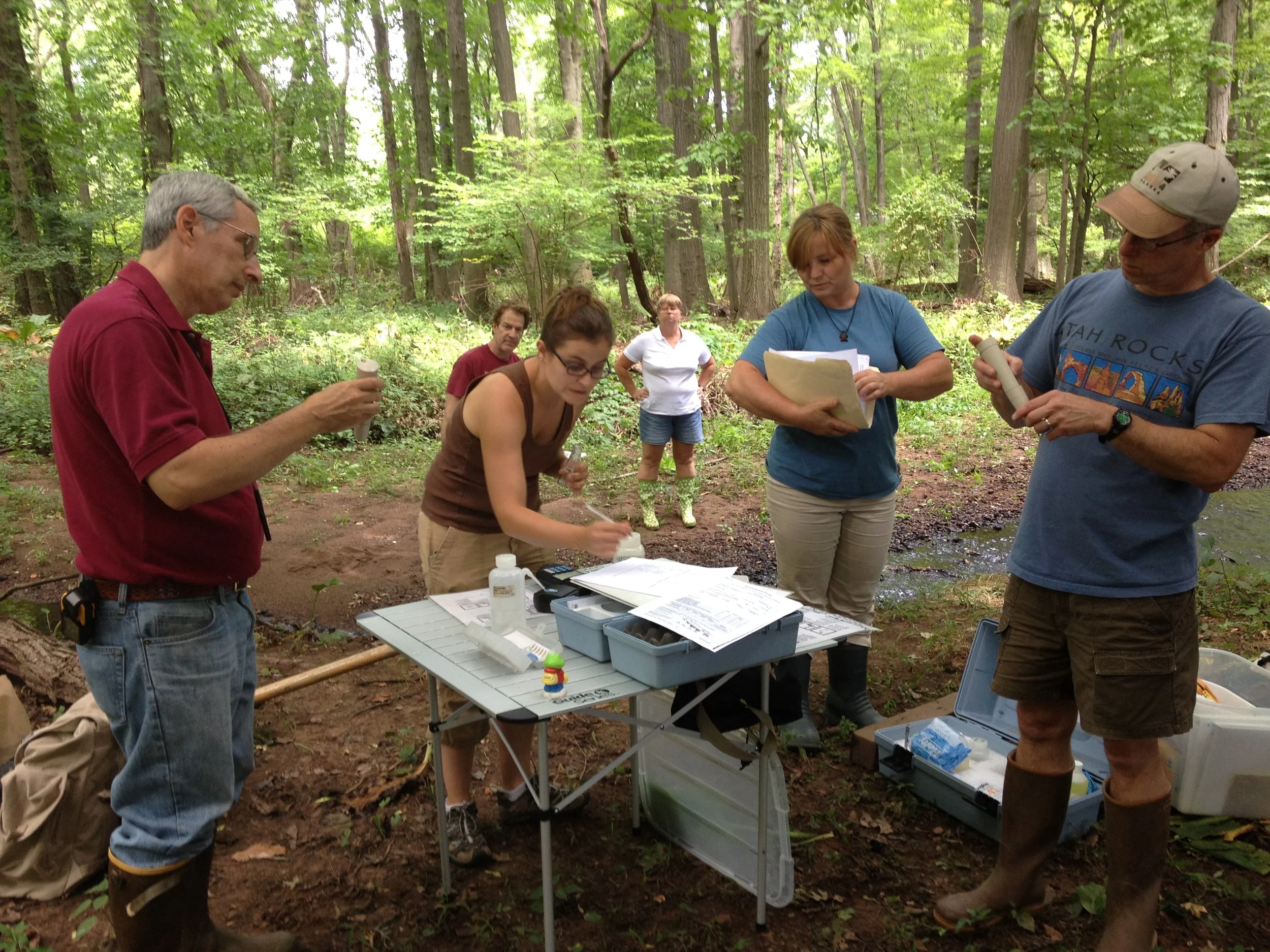In Touch with Our Creek
Citizen Science: Stream Monitoring
Learn how to monitor the Sparkill Creek using methods and study designs consistent with Riverkeeper’s Hudson River and Community Science programs. Monitoring includes data collecting for:
Stream Life
Enterococcus (possible evidence of sewage in the water). This sampling program is in Partnership with the Hudson Riverkeeper Organization.
E-coli sampling within the NYS PEERS project.
Macroinverterbrate (Each different community of critters who live in the stream under the rocks tells us about the health of the water.)
Chemistry of water - Members conduct chemical monitoring in partnership with the County Citizen Science Program measuring nitrates, phosphates, dissolved oxygen, pH, conductivity and temperature.
Physical state of the creek - Assessment of creek bed, stream banks and surroundings.
Community Education & Outreach
SCWA’s community outreach commitment means you will find us educating people at local libraries, street fairs, environmental events and other community gatherings.
Creek Clean-Ups - Join a Creek Clean-up. We organize two Creek Clean-ups a year between the months of May through October. Contact us for more info.
Water Sampling is a great way to participate in monitoring the health of our creek. 16 sampling sites have been identified. 5 teams meet once per month from May thru October to cover these 16 sites.
Our Sampling Partners include: Riverkeeper, EPA, St. Thomas Aquinas College, Dominican College, Rutgers University , Rockland County Soil & Water District.
Invasive Plants Removal - periodically. Water chestnuts are a particular recent problem.
Eels: Giving the Baby Eels a Chance
The upstream trip on Sparkill Creek, which winds through western Orangetown to the Piermont Marsh, is a more challenging climb than most for little eels. The Hudson Estuary Program has installed an “eel ladder” for them in the creek. It’s made of plain old PVC pipe, with netting inside to help the eels get a grip and get over a dam. They’ll emerge into a bucket to be counted, recorded, gently transported upstream and released.
Sparkill Creek Volunteers can help to:
Count
Weigh
Record
Release
Trees for Tribs
Hudson Estuary Trees for Tribs (tribs as in tributaries) program engages volunteers in restoring thousands of feet of streamside buffer through native trees and shrub planting. The program offers land owners with free native trees and shrubs for qualifying riparian buffer planting/restoration projects. Trees for Tribs staff may also be able to assist with plant selection, designing a planting plan, and other technical support to improve the odds of success for projects.
Riparian (streamside) buffers are a major component to maintaining healthy streams and waters and their conservation is a critical element of any holistic watershed program. Riparian areas are often severely damaged during the land development process, leading to unintended negative impacts to our streams and rivers. Composed of trees, shrubs and grasses, these buffers help to reduce pollution entering waterways by slowing down and filtering runoff, thus extending retention time and improving water quality. Buffers also help to reduce flooding and erosion by stabilizing shorelines and absorbing high velocity flows. In addition, they serve an important role for wildlife as a shoreline transition zone and travel corridor, not to mention increasing overall biodiversity and improving in-stream health.
Lawn Care Tips
Don’t leave lawn care until spring? Fall is the best time of year to commune with your lawn especially as healthy lawns help area lakes and streams. Thick grass helps prevent soil erosion and absorbs rainwater. By soaking up rainwater, lawns can decrease the amount of storm water runoff that funnels pollutants into drinking water that supplies, lakes and streams. Our friends at Organic Lawn Care have provided us these Fall Lawn Care Tips
Here’s how to recycle your yard waste:
Our friends at Cornell Cooperative Extension have released their tips on backyard composting, best practices in mulching and what to do if you must rake and bag leaves. Visit Cornell Cooperative Extension for much more information.
Click here to read our 2019 SCWA Biennial Report on two years worth of accomplishments under the leadership of Larry Vail, our recent Chairperson.
The Water Chestnut
Water Chestnuts are an invasive plant species that are becoming more abundant in New York. These plants are not native to North America, and there are no natural predators that consume the plants to keep the population in check in NYS. This heavily affects recreational activities in bodies of water such as swimming, fishing, boating, etc. because the species reproduces quickly and crowds the surface of rivers, lakes, waterways by creating a dense layer of botany
HOW DOES SCWA HELP?
Members of Sparkill Creek Watershed Alliance use resources like boats, floatation equipment, canoes, etc. to pull out the Water Chestnuts before they bloom to the surface of the water. This happens in areas where the species is particularly dense, to ensure that the spread of the plant is limited.















